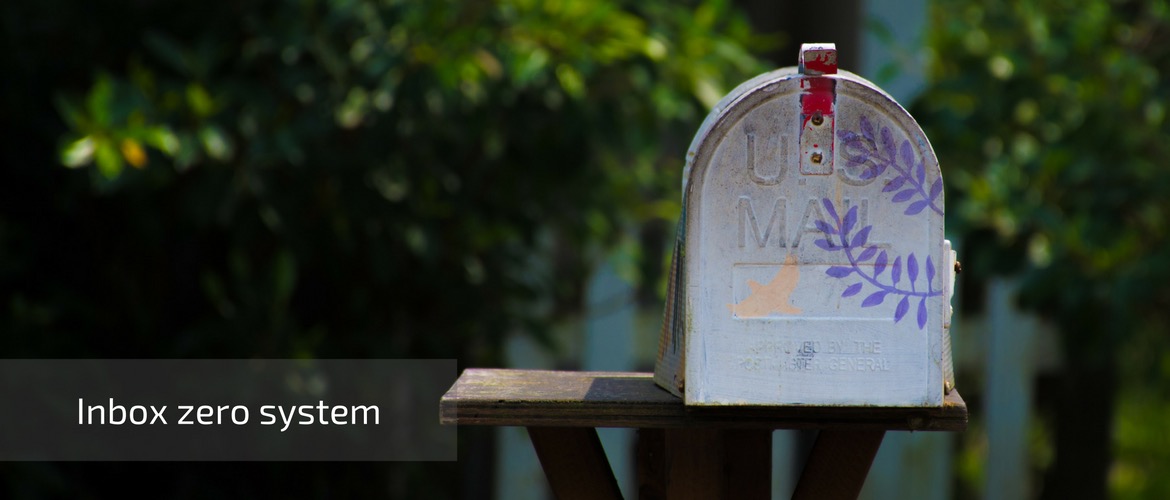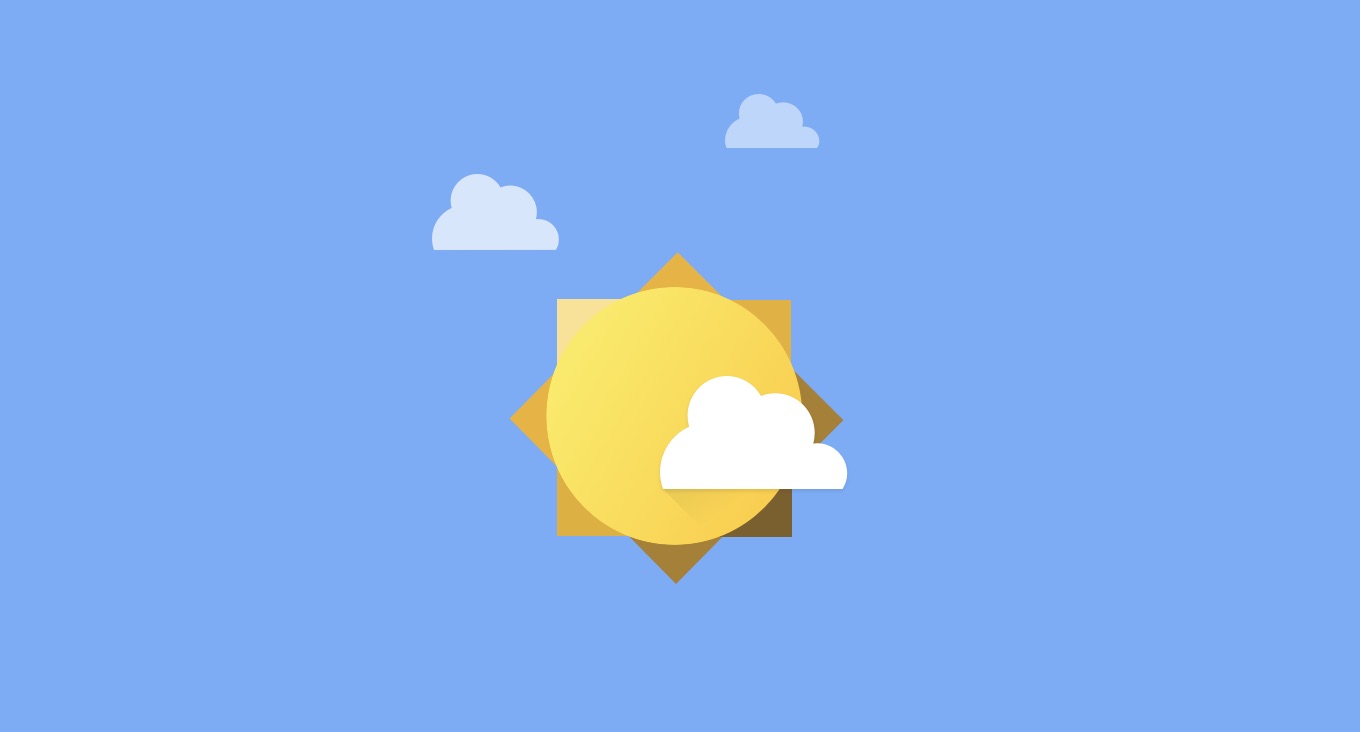Inbox zero – efficient way to manage emails

Every day at least 30 new messages land in my mailbox. Newsletters, reminders, status updates, mentions, recommendations and even personal or business messages – each of them need my time and an attention. And no one besides me is responsible for handling them.
I had my very first email account on the public news site. I received tons of advertising messages until I got the invitation to the Gmail. This mail service was capable of identifying unwanted messages. That was what I have been looking for for a long time.
Although I receive a bunch of messages each day (more important than spam or advertisements), at the end of the day my inbox is empty. Thanks to Inbox Zero approach, I manage my matters without wasting time. It helps me preventing myself from being overwhelming by a number of emails.
I didn’t have any special system for managing my inbox. I deleted less important messages. Sometimes I left them in inbox without the reason or if messages have looked non-trivial. That way I had all messages marked as reading but the counter still shows more than 1000 messages in the inbox. It seemed to me, that these messages would be useful in the future. The fear that I’ll need something I before removed kept me from deleting. I needed something more efficient.
What is inbox zero?
Inbox zero is one of this system. The system that helps you keep your inbox under control. It doesn’t take a lot of time, it only requires a lot of discipline. First, Inbox zero assumed, that email is only a communication channel. Each incoming message should be proceed until the empty inbox.
Instead of interrupting by every message that arrives in your inbox, you should check for new emails and process them in a bulk. The list of operations you can perform on a single letter is as below:
- DELETE
- DELEGATE
- RESPOND
- DEFER
- DO
As you can see the list is short but it contains all actions that are you need to keep your matters under control. I’m going to explain each one later in the article.
Advantage of Inbox zero approach
Treating email only as communication channel decreases the number of places where you can look for the next task to do. Although keeping information in the inbox may look convenient, it may lead to negative results, e.g. procrastination. Checking your inbox without special reason and seeing the same messages, again and again, force your subconscious mind to work on them. Even if it’s not necessary at this moment. Each day you see a lot of information that requires processing, so why you want to add another one?
The second advantage is feeling, that you have everything under control. Imagine, that you look to your inbox and the counter shows 0 messages. Give yourself one minute and try to do this exercise in your head. How do you feel? Relaxed, easy, calm? Or maybe anxious, scared, afraid? First time can be strange but it’s normal, especially when you are not used to deleting or reading each email. Not processed emails are an invitation to losing time:
- “I don’t completely read this newsletter”…
- “Nice photo, I remember that”…
- “I forgot to answer”…
- “I read this funny story once again”…
Don’t let yourself waste a time. Take a look from the other side. The empty list of messages should tell you that you probably run a wrong program. Or maybe you check the e-mail too often? If it’s nothing to do within your inbox you’ll go to the next task.
Another advantage is searching. The more messages you delete, the easier potential seeking is. It doesn’t matter how advanced search engines we have. Sometimes there will show you a message that you don’t need but it can attract your attention (and time).
I always leave my inbox empty. That makes me more relaxed and happier. I know all things to do I’ll find in other, more reliable place, designed for planning. Moreover, I don’t miss something important. For me email is for communication, not to organize life.
How to work with Inbox zero?
1. Clear your inbox

If you want to try Inbox zero approach you have to clear your inbox. You have to realize. It’s inbox ZERO. Nothing can be in your inbox. You have to realize that you don’t need all these messages. It’s not a cloud drive. Your photos, documents, and other important stuff can stay in the dedicated cloud drive, like Dropbox, Google Drive. I have tips for you – there are 3 different ways how to reach empty inbox:
- Hardcore version – select all your messages and delete them. Fastest and easiest approach but I don’t know if somebody went this way.
- Select messages older than 3 months and delete them. You have to revise the rest of emails and process them. You can adjust the time to yourself, but don’t be so sensitive. If you don’t need these messages for 3 months, probably you’ll never need there in the future.
- Hardcore version – process all your messages.
The choice is yours. It depends on how much time you’re going to spend sorting your messages and also how important information lay in your inbox.
2. Don’t sit in your inbox
It’s nothing interesting to do in your inbox. Don’t waste the time keeping the mail application open waiting for the next message. Instead, keep your email app closed and check it for new emails from time to time. Email is not a real-time communication. You don’t have to respond immediately (unless your work or life requires that).
3. Turn off email notifications
Notifications are everywhere. Sometimes are helpful but most of them are useless. Notification is a guy, who interrupts you when you are in the middle of the ground-breaking idea. Nobody wants to be distracted in this moment. You probably either so don’t let interrupt yourself.
Each time you got a notification, you switch the context – and context switching is the productivity killer. Moreover, switching to process only one single email is a waste of time. Avoid it. Multitasking works in the car, but it’s no efficient during the work.
4. Unsubscribe newsletters that you don’t even read
Do you ever know how many newsletters you subscribe? How many of them do you read? Or maybe you open them for marking as reading? If you got newsletters that you know you don’t read – unsubscribe them. If there is no option for that, mark it as a spam. When you have a doubt, you’ll do this simple trick: check how many times in a row you don’t read the newsletter. If it’s more than 3, you’ll unsubscribe it.
5. Don’t leave a message without the action
Now, I’m going to say more about actions you can perform on a single message, but instead of focusing on each operation I’ll focus on the flow instead.
- If the email doesn’t need any action – DELETE or ARCHIVE it.
- If the action will take less than 2 minutes:
- simply RESPOND. Try to write short emails.
- simply DO. That’s probably not a big deal. 2 minutes of your time is nothing compared to the time that your mind spend to thinking about it.
- If the action will take more than 2 minutes:
- DELEGATE, if this task can be done by someone else.
- DEFER, and I recommend place other than the inbox. Extract the most important part of the message, redefine it in your own way and put it into reliable place:
- Task list, if it’s a project or bigger task to do.
- Calendar, if it’s an appointment or something it’s scheduled.
This flow let you take a decision for each message you receive.
6. Don’t leave your inbox without processing all messages
Once you notice something in your inbox, you open a new “loop” that resides in your mind. Although you don’t think about it, your subconscious mind process it taking resources.
What is loop?
“Loop” comes from "Getting Things Done" philosophy David Alen. It means a matter that has not been completed and still sits in your head, even if you don’t think about it. Sometimes it comes back for a while in random moments and it can break your way of thinking.
Try to close as many loops as you can even if it means that you have to DEFER something for later (outside the inbox). It’s also a good decision, better than nothing. Do you want to come back to the same message again and again? If you have doubts just ask yourself – Is any reason why I can’t process this message?
7. Safe people’s time as much as yours
People don’t like long emails. Nobody has time to read them. Because of that, you shouldn’t write a novel – you probably also ignore this kind of emails. Be safe in words and try to write the message that you want to receive (when it comes to the volume, not the content). Don’t beat around the bush.
It’s not a piece of advice about the email netiquette. I assume, that you already know how proper email should look. Short messages are easier to digest and process. Keeping it simple gives you a chance, that your letter doesn’t fall down to the bottom of the inbox.
Summary
Although I don’t process hundreds of e-mails every day, I feel that I work in the most efficient way with my inbox. After introducing this system into my life I spend less time in the mail app. I also stop worrying about things I didn’t complete. Paradoxically, I check my inbox less frequent and I spend much less time than before. I’m able to process more emails and quickly getting things done.
This system is not for all kinds of job. If you have to have continuous contact with your customers, you work at help desk or support or your job is strongly connected to e-mail – I’m sorry, it happens. But if you are lucky and your job doesn’t need yours all the time sitting in your mailbox, that’s great. If you have read this text and it interests you, maybe it’s a good reason to give yourself a chance to check it in practice. Perhaps you’ll discover other benefits (or defect). I would like to hear what do you think about it and how it works for you.
I have to also remind, that I’m not a coach or a personal trainer. I’m sharing only things that I tested on myself and that work for me. Please note, that everything I have written here dapted to my lifestyle. I can’t promise, that all them will work for you but I’ll keep my fingers crossed. So, do you already know when you’ll be cleaning your inbox?
Resources
Featured photo by Xavier Massa on Unsplash.